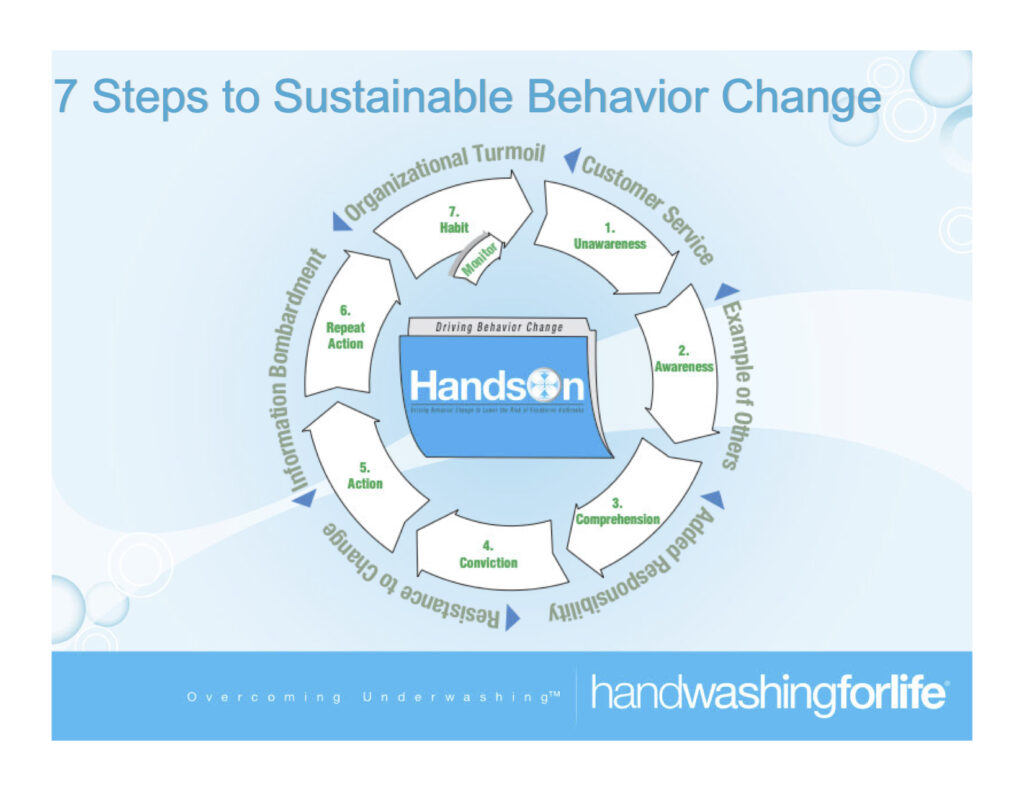Our current work on electronic handwashing compliance in restaurants clearly documents the industry’s poor hand hygiene reality. It is encouraging to watch how monitoring and keeping score changes the game. It is the foundation for motivating behavior change and raising the bar for handwash frequency and food safety.

New behaviors are formed but it takes weeks to burn in and become a new habit.
Too often, training is seen as the singular factor in changing handwash behaviors. We train, stop and expect improved results. There are 7 steps and we stop after step 2 or 3.
Knowledge doesn’t change behaviors. Conviction and repeated practice are the key missing links.
Changing behaviors is not done in a vacuum. Each employee, even within the management, is faced with a unique combination of the “headwinds” depicted in the outer band. Time frames for behavior change projects must be pushed forward with mile markers established for each step.
Standards and monitoring data are critical. Electronic handwash monitoring technologies provide a powerful new tool that mirrors the assistance a scale gives to someone looking to change their eating habits. Everyone we know, who has intentionally lost weight, has had a scale. Most all foodworkers are working without that monitoring feedback, without a scale of success.
Check out the HandsOn System, break through the “training ceiling” and chart a tailored course to sustainable handwashing behaviors, based on risk.


